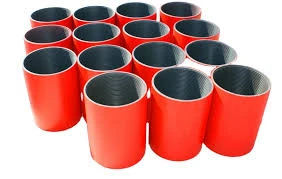- Afrikaans
- Albanian
- Amharic
- Arabic
- Armenian
- Azerbaijani
- Basque
- Belarusian
- Bengali
- Bosnian
- Bulgarian
- Catalan
- Cebuano
- Corsican
- Croatian
- Czech
- Danish
- Dutch
- English
- Esperanto
- Estonian
- Finnish
- French
- Frisian
- Galician
- Georgian
- German
- Greek
- Gujarati
- Haitian Creole
- hausa
- hawaiian
- Hebrew
- Hindi
- Miao
- Hungarian
- Icelandic
- igbo
- Indonesian
- irish
- Italian
- Japanese
- Javanese
- Kannada
- kazakh
- Khmer
- Rwandese
- Korean
- Kurdish
- Kyrgyz
- Lao
- Latin
- Latvian
- Lithuanian
- Luxembourgish
- Macedonian
- Malgashi
- Malay
- Malayalam
- Maltese
- Maori
- Marathi
- Mongolian
- Myanmar
- Nepali
- Norwegian
- Norwegian
- Occitan
- Pashto
- Persian
- Polish
- Portuguese
- Punjabi
- Romanian
- Russian
- Samoan
- Scottish Gaelic
- Serbian
- Sesotho
- Shona
- Sindhi
- Sinhala
- Slovak
- Slovenian
- Somali
- Spanish
- Sundanese
- Swahili
- Swedish
- Tagalog
- Tajik
- Tamil
- Tatar
- Telugu
- Thai
- Turkish
- Turkmen
- Ukrainian
- Urdu
- Uighur
- Uzbek
- Vietnamese
- Welsh
- Bantu
- Yiddish
- Yoruba
- Zulu
drill pipe pup joint
Understanding Drill Pipe Pup Joints Key Components in Oil and Gas Drilling
In the complex world of oil and gas drilling, precision and efficiency are paramount. Among the various components used in drilling operations, the drill pipe pup joint plays a crucial role. This article explores the significance, functionality, and characteristics of drill pipe pup joints in the drilling industry.
What is a Pup Joint?
A pup joint is a short length of pipe, typically ranging from 2 to 14 feet, that is used to adjust the overall length of drill pipe strings. The primary purpose of a pup joint is to provide flexibility in the total length of the drill string, allowing for adjustments based on specific drilling conditions or equipment requirements. By integrating pup joints, drillers can avoid unnecessary complications and ensure optimal performance during drilling operations.
Construction and Specifications
Pup joints are constructed from the same materials as drill pipes, commonly high-strength alloys such as API (American Petroleum Institute) grade steel. This ensures that they can withstand the extreme pressures and mechanical stresses encountered in drilling environments. The exterior diameter of a pup joint is usually consistent with that of standard drill pipe, allowing for seamless integration into the drill string.
Manufacturers produce pup joints in various sizes and specifications to meet diverse drilling requirements. Standard lengths range from 2 to 14 feet, but custom lengths can also be fabricated. Additionally, pup joints can be threaded to match the drill pipe connections, ensuring a tight and secure fit.
Applications of Pup Joints
drill pipe pup joint

Pup joints find application in various scenarios within drilling operations. One of their primary uses is to make length adjustments to the drill string. As drilling progresses, the total depth of the hole increases, necessitating changes in the drill string length to maintain efficiency. Pup joints provide a simple solution to achieve the desired length without needing to replace entire sections of drill pipe.
Moreover, pup joints can also assist in compensating for any shortening of the drill string that may occur due to bending under weight or other forces. In addition, they are vital in accommodating rotary tables and other surface equipment that require specific pipe lengths.
Advantages of Using Pup Joints
The incorporation of pup joints in drilling operations offers several advantages. Firstly, they enhance the versatility of the drill string, enabling quicker adjustments tailored to the drilling environment. This adaptability is particularly valuable in exploratory drilling where conditions can vary significantly.
Secondly, using pup joints can minimize downtime. Instead of dismantling sections of the drill string and incurring costs and delays associated with replacement, drillers can simply add or remove pup joints as needed. This leads to improved operational efficiency and costs savings.
Lastly, pup joints provide a means to enhance safety during drilling operations. By allowing for precise adjustments in equipment, drillers can minimize the risks associated with incorrect lengths or mismatched connections.
Conclusion
In summary, drill pipe pup joints are essential components in the oil and gas drilling industry, facilitating length adjustments and enhancing operational efficiency. Their robust construction and adaptability make them invaluable in various drilling contexts. As the industry continues to evolve, the importance of such specialized tools will remain critical in optimizing drilling performance and ensuring safety in challenging environments. With a profound understanding of their functionality and significance, drilling professionals can leverage pup joints to enhance the overall success of their operations.
-
Tubing Pup Joints: Essential Components for Oil and Gas OperationsNewsJul.10,2025
-
Pup Joints: Essential Components for Reliable Drilling OperationsNewsJul.10,2025
-
Pipe Couplings: Connecting Your World EfficientlyNewsJul.10,2025
-
Mastering Oilfield Operations with Quality Tubing and CasingNewsJul.10,2025
-
High-Quality Casing Couplings for Every NeedNewsJul.10,2025
-
Boost Your Drilling Efficiency with Premium Crossover Tools & Seating NipplesNewsJul.10,2025







